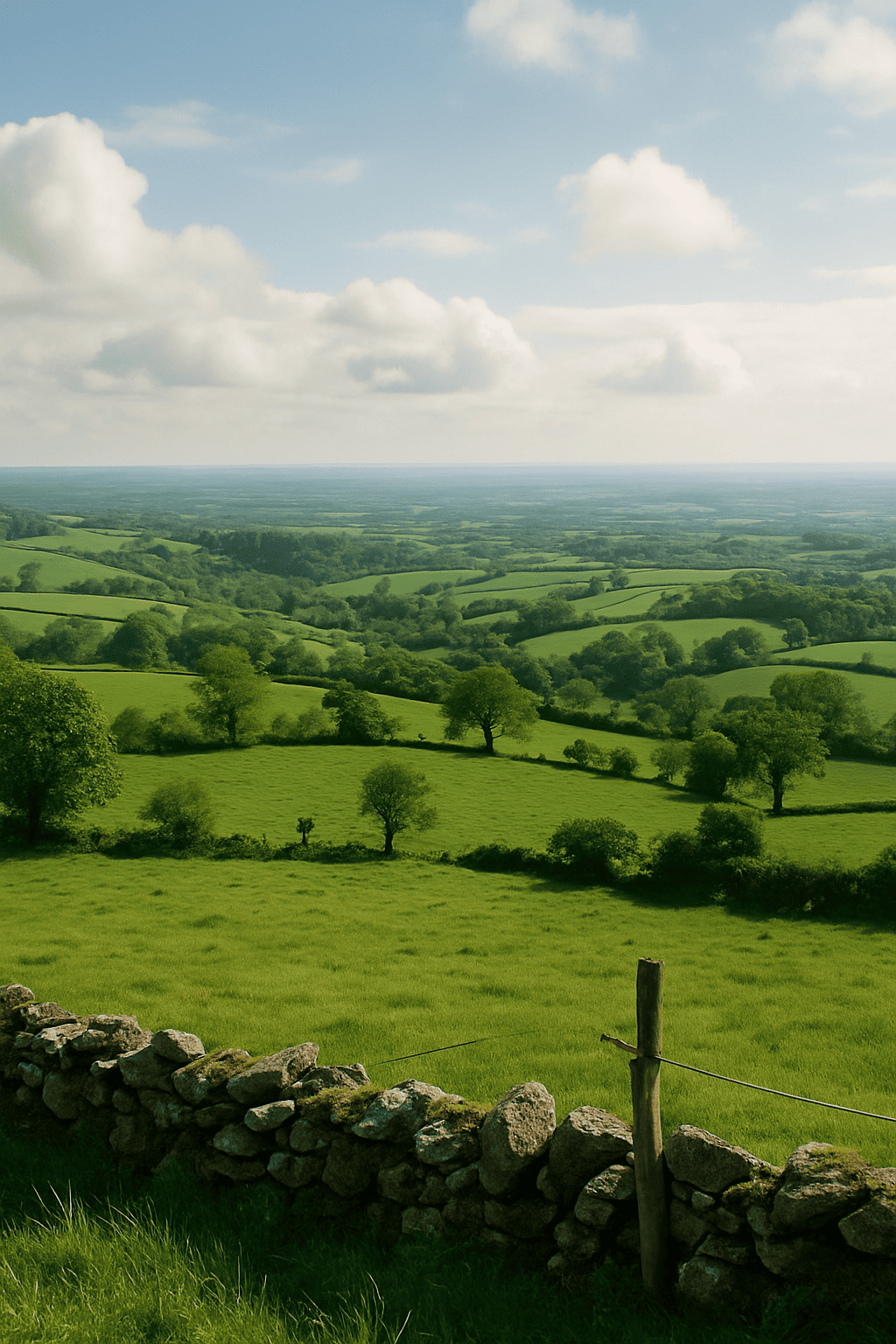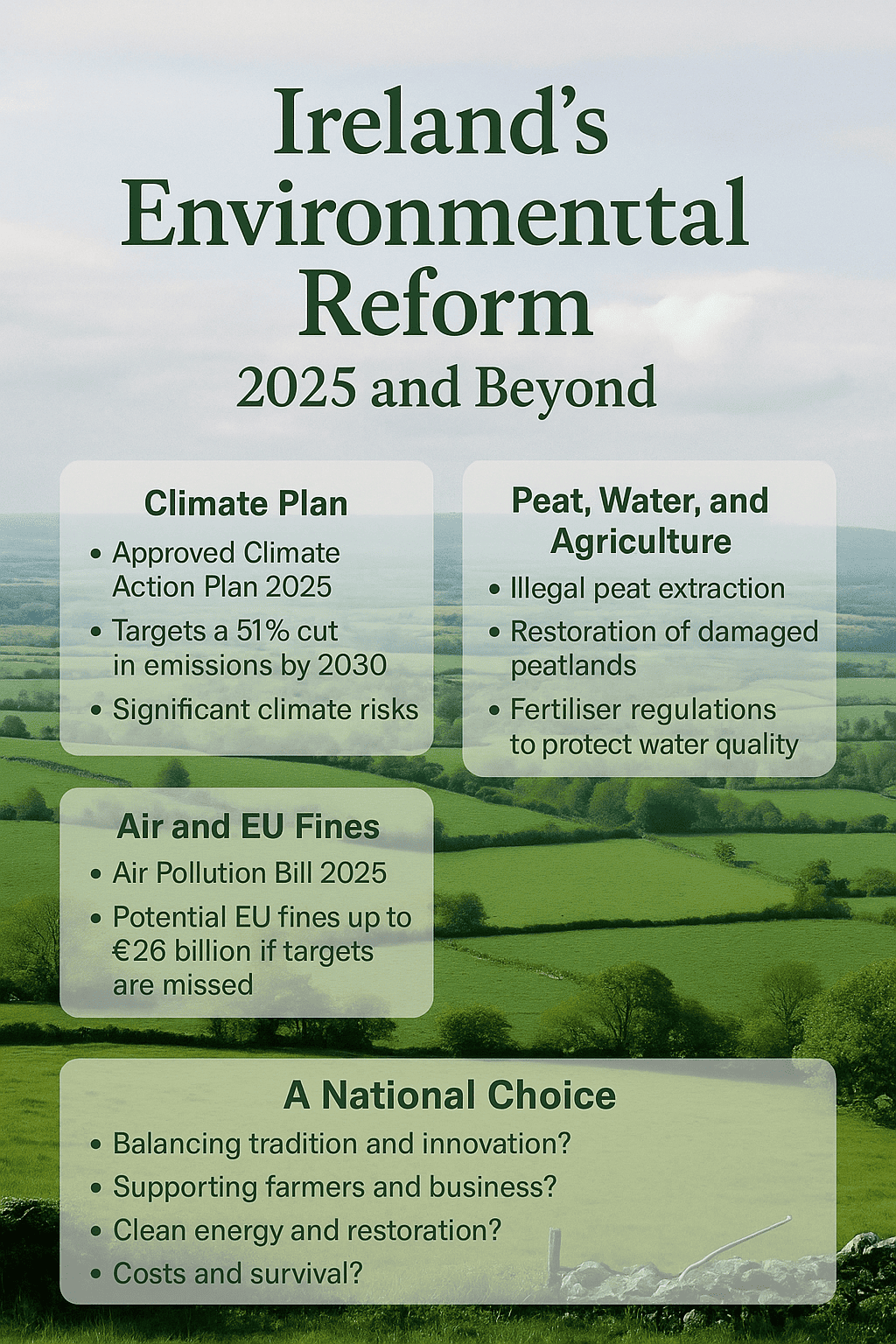
A Climate Plan with Teeth — But Also Gaps
The Climate Action Plan 2025, signed off earlier this spring, renews Ireland’s commitment to cut greenhouse gas emissions by 51% by 2030. For the first time, sector-by-sector targets were sharpened: agriculture must reduce nitrogen use and methane, energy providers must accelerate wind and solar projects, and transport is tasked with expanding electric vehicle infrastructure.
Yet watchdogs warn of a credibility gap. The Environmental Protection Agency (EPA) has highlighted that, while Ireland has ambitious laws, implementation is patchy. In its first National Climate Change Risk Assessment, the agency listed 115 risks, from coastal flooding to water pollution, and classified 43 of them as “significant.”
Peat, Water, and the Battle Over Tradition
Few issues capture Ireland’s environmental crossroads more vividly than the peat bogs. For generations, turf cutting was both a tradition and a necessity, particularly in rural communities. But scientists point out that drained bogs release vast amounts of carbon dioxide.
In 2025, EPA investigations uncovered several cases of illegal peat extraction across seven counties. At the same time, new EU rules require Ireland to restore damaged peatlands and rewet bogs. The policy has sparked tension: rural families see cultural erosion, while environmental groups argue it is a matter of survival.
Water quality is another front. Excess nitrogen and phosphorus from agriculture have polluted rivers and lakes, undermining biodiversity. The government has tightened fertiliser regulations, yet farmers fear being pushed to the brink without fair compensation.
Business and Health: Why Reform Is Wider Than Climate
Environmental reform is not only a green agenda — it is economic. Businesses increasingly face international pressure from investors and clients to prove sustainability credentials. Dublin’s tech firms are already weaving renewable energy into supply chains, while green finance is emerging as a new market.
Public health is also at stake. The recently passed Air Pollution Bill 2025 aims to tackle particulate matter and smoky fuel emissions. Doctors have long warned that poor air quality drives respiratory disease and premature deaths. Clean air, once taken for granted in Ireland, is now part of the reform package.

Europe’s Shadow: The Price of Inaction
The European Union has made it clear: failure to meet binding emission targets will not be tolerated. Independent analysts estimate that Ireland could face between €8 and €26 billion in penalties by 2030 if progress stalls.
That figure dwarfs any short-term costs of reform. It is not just an accounting problem — it is a political one. Paying fines to Brussels while climate impacts worsen at home would erode public trust in both government and European institutions.
A National Choice
Ireland’s environmental reform is therefore more than a policy checklist. It is a national choice about identity and future direction. Does the country want to cling to outdated energy and agricultural practices, or embrace innovation and resilience?
The road ahead is demanding: planning reforms must cut red tape without silencing communities, farmers need financial and technical support to adapt, and enforcement must be consistent rather than symbolic.
Yet opportunity lies in the Atlantic winds that can power homes, in restored bogs that store carbon and nurture biodiversity, and in businesses that can thrive by going green first.
Conclusion
The story of environmental reform in Ireland in 2025 is one of tension between tradition and transition, law and enforcement, short-term costs and long-term survival. What happens in the next five years will decide not only whether Ireland avoids EU fines, but whether it positions itself as a leader in climate resilience.
The question is not if reform will come — it already has. The real question is whether Ireland will seize it with vision and determination, or allow another decade to slip away.
